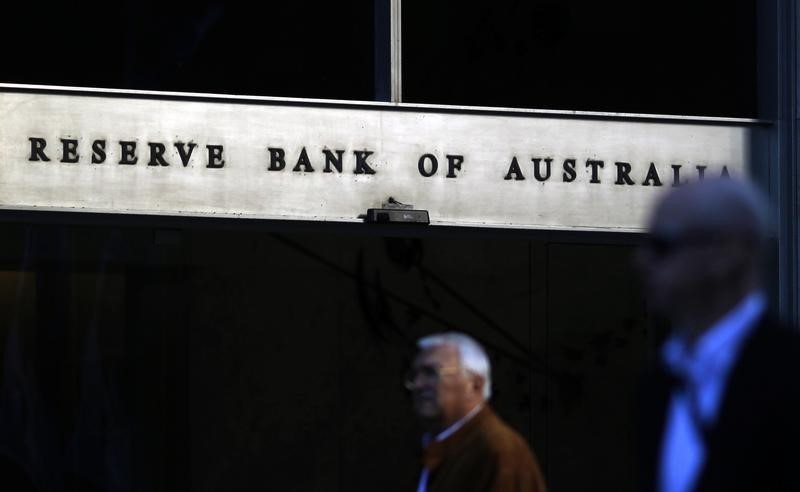By Wayne Cole
SYDNEY, April 2 (Reuters) - Australia's central bank held interest rates steady on Tuesday and again highlighted the strength of employment, showing no immediate inclination to echo the outright dovish tone of some of its global peers.
The measured message comes just hours before the country's conservative government is expected to release an annual budget larded with tax breaks and infrastructure spending, stimulus that might lessen the need for rate cuts this year.
The Reserve Bank of Australia (RBA) ended its April policy meeting with rates firmly lodged at 1.5 percent, where they have been since mid-2016. Neither did its statement smack of any urgency to act.
"The Australian labour market remains strong," said RBA Governor Philip Lowe in the statement. "Further progress in reducing unemployment and having inflation return to target is expected, although this progress is likely to be gradual."
Lowe said the central bank board would "continue to monitor developments and set monetary policy to support sustainable growth."
Just last week, the Reserve Bank of New Zealand (RBNZ) blindsided investors by abandoning its neutral stance and declaring the next move in interest rates would likely be down.
Markets reacted violently by pricing in not one but two quarter-point easings in its 1.75 percent cash rate.
The shift comes amid dovish turns by the Federal Reserve, European Central Bank and the Bank of Japan.
That in turn fed speculation the RBA would ultimately be forced to ease, if only to stop its currency from rising.
The market 0#YIB: has moved to price in a quarter-point rate cut to 1.25 percent as early as September. Yields on three-year paper AU3YT=RR sank to an all-time low of 1.37 percent last week, well under the cash rate.
Futures slightly widened the odds of a cut in the wake of the meeting, while the local dollar held at $0.7104 AUD=D3 .
IN FAVOUR OF FISCAL POLICY
The RBA made no mention of the budget, but analysts suspect it would prefer to juice a misfiring economy with fiscal stimulus rather than cut rates from already record lows.
The government of Prime Minister Scott Morrison has plenty of incentive to be generous given it faces an election in May and is running well behind in the opinion polls.
It also has the wherewithal as revenues from mining companies and households are handily ahead of forecasts, while a strong jobs market has limited welfare payments.
The prospect of sweeteners already seems to have had some impact with the public, which is smarting from sliding house prices and record levels of debt.
The ANZ-Roy Morgan index of consumer confidence out on Tuesday showed a 2.6 percent rise last week to near a one-month high, largely due to optimism on the economic outlook.
"Consumers head into the Budget with confidence above average and at the highest level for some weeks. Talk of additional tax cuts and spending may be supporting sentiment," said ANZ senior economist David Plank.
There was also better news on construction as data showed approvals to build new homes jumped 19.1 percent in February, when analysts had looked for a small drop.
The pickup came thanks to a 62 percent surge in multi-home approvals, which includes major apartment blocks. Some of that could be unwound in March but nonetheless indicates a solid pipeline of work to be done.
